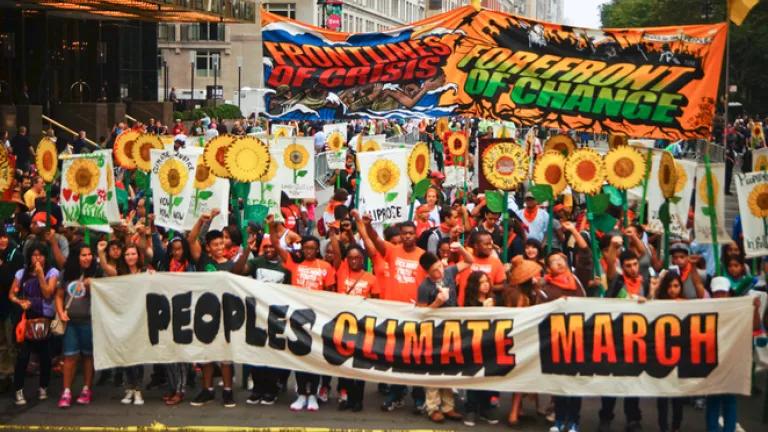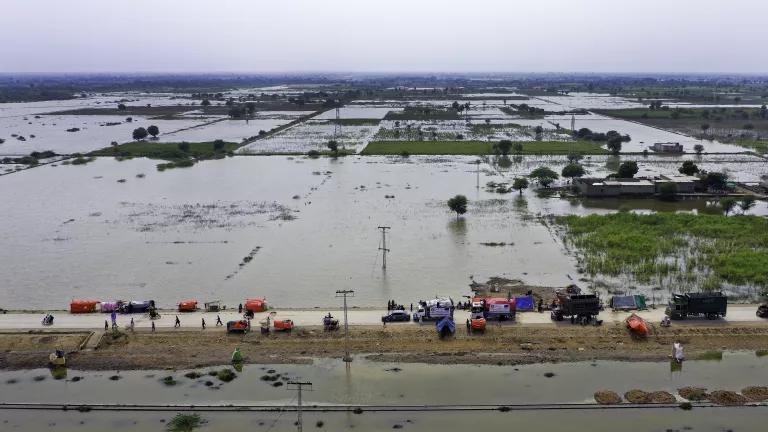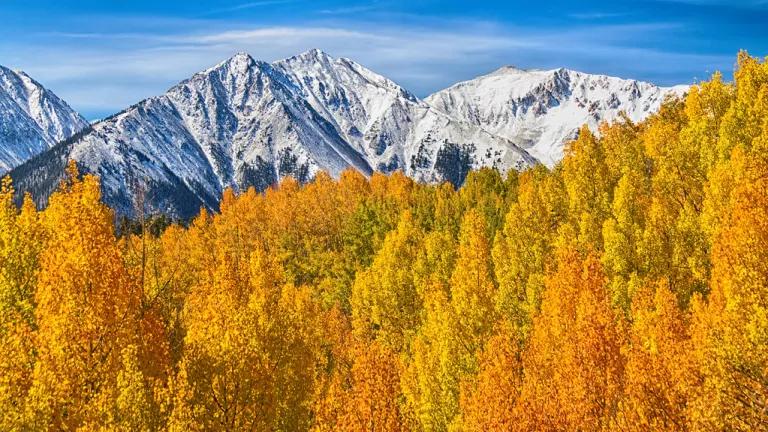EJ Groups File Amicus in Support of NYC Suit Against Big Oil

Six years ago, Superstorm Sandy ripped into New York City, bringing unprecedented destruction to the five boroughs and beyond. The City’s low-income communities and communities of color were among the most harmed—many of their homes were flooded, and many lost electricity, heat, and running water for days and sometimes weeks. Since Sandy made landfall, the City has worked to become more climate resilient, and the science linking extreme weather events to the burning of fossil fuels has become even more robust.
In response to the high level of climate risk New York City has and will continue to experience, the City has sued the world’s five largest investor-owned fossil fuel producers (BP, Chevron, ConocoPhillips, Exxon Mobil, and Royal Dutch Shell), seeking compensation for the harm the City has and will continue to incur to protect itself and its residents from the impacts of climate change. The City alleges that these fossil fuel companies have and continue to produce, promote, and sell massive amounts of fossil fuels that they knew would contribute to global warming when used exactly as intended, putting profits before the health of people and the planet.
Today, three of the City’s environmental justice groups, the New York City Environmental Justice Alliance (NYC-EJA), UPROSE and THE POINT Community Development Corporation, represented by NRDC, have filed an amicus brief in support of the City’s claims. Each of these organizations have been at the forefront of advancing a vision for climate in the face of increased climate risks. This brief has been filed with the U.S. Second Circuit Court of Appeals, where this case is being heard on appeal from the U.S. Southern District of New York.
In their brief, NYC-EJA, UPROSE, and THE POINT write to support the City’s claims, which are brought under state nuisance and trespass law. The brief seeks to aid the Second Circuit Court of Appeals in its decision by demonstrating that climate change, while experienced globally, is a problem with very local effects, especially on low-income communities and communities of color. These effects are both unique and perilous to New York City, as the nation’s most densely populated city with 520 miles of almost entirely developed coastline and major pockets of poverty.
The brief makes three points.
First, anthropogenic climate change is real, it is already happening, and it is primarily caused by the burning of fossil fuels. For thousands of years, the world’s climate was relatively stable, with a nearly constant level of carbon dioxide in the atmosphere. But since 1901, the planet’s surface has warmed about 1.5°F, and the rate of warming has more than doubled since 1983. There is clear consensus amongst climate scientists that climate change is real and that humans, primarily by the burning of fossil fuels, are the dominant cause of it. According to the U.S. Environmental Protection Agency’s most recent inventory of greenhouse gas emissions from 1990 to 2016, carbon dioxide generated from the burning of fossil fuels has accounted for approximately 77 percent of all greenhouse gas emissions since 1990.
Second, it is well-established that this warming has led to an increase in extreme weather events, like deadly heat waves and storms, and New York City has suffered and will continue to suffer from these effects uniquely. The City’s temperature has risen at twice the global rate, and, as demonstrated by Sandy, New York City, especially its 520 miles of almost entirely developed coastline, is especially vulnerable to storms and flooding.
Third, within New York City, climate change does not treat all neighborhoods or residents equally. People earning low incomes and people of color are the most vulnerable to the worst of climate change’s effects, such as extreme heat, extreme storms, and flooding. Low income communities and communities of color have higher rates of heat-related deaths and experienced greater damage from Sandy. To make matters worse, these communities tend to have fewer resources to both prevent and recover from climate disasters.
When combined with the fact that low-income communities and communities of color tend to already experience harmful environmental, economic, and social conditions, all of these factors can act cumulatively to contribute to persistent health problems.
Fossil fuels have already had a devastating effect on the well-being of New York. And these effects—Harlem residents being hospitalized for heat-related illnesses, homes in Staten Island permanently damaged by flooding—are not abstract or speculative—they are concrete, measurable, and unique to New York City. The costs of climate change are currently being borne by taxpayers, not those responsible for extracting and processing fossil fuels. That’s wrong, and it must change.
The City’s case is ultimately about ensuring that the world’s largest producers of fossil fuels are held responsible for the harmful effects of climate change—hotter temperatures, longer and more severe heat waves, extreme weather events, and rising sea levels—that have and will continue to cost New York City billions of dollars in public health services and climate resilience and adaptation measures.
Now is the time for climate justice. Holding the largest fossil fuel companies accountable for the harm they have and will continue to cause New York City is a critical step to ensure that we can protect the City and its most vulnerable residents from climate change’s worst effects.




